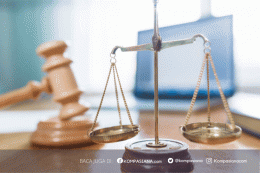However, the practical application of the provisions on personal and civil rights indicates that there are numerous contradictions and inconsistencies. Stalin's constitution was adopted during the most repressive regime in the history of the Soviet Union. It was in 1936 that the epoch of the most active terror within the Soviet state (the so-called "Great Purge") began, the goal of which was to eliminate political and ideological dissidents. The consequence of such an extremely repressive and totalitarian regime is about 14 million people who stayed in labor camps, between 4 and 5 million people who lost their lives during that period and between 6 and 7 million people who were forcibly deported to remote parts of the USSR.
The theoretical justification and practical expediency of this constitution is quite clear. One of the main reasons for the adoption of such a constitution is the desire of the leadership to offer citizens a formal proclamation of a highly advanced social order. On the other hand, its application indicates that it is an instrument of creating the illusion of a "perfect" system that swears the true meaning of the state and the supreme leader, ie an instrument that restricts and abolishes the freedoms and rights of citizens.
Third Reich -- Weimar Constitution and act of 1933.
German Constitution of 1919 - the so-called. Weimar Constitution - was characterized by progressive, liberal-democratic content and during the time in which it was adopted was extremely progressive. The entire second part of the constitution determined the basic rights and obligations of citizens. This constitution provides for the equality of all Germans before the law, equal status for men and women, national minorities are allowed to use their mother tongue in education, administration, justice, and guarantees the inviolability of the rights of individuals, their homes, correspondence , telephone conversations, and the right to free opinion. In addition, special protection of the institution of marriage has been established, the status of married and illegitimate children has been equalized, the right to gather and organize,
With the coming to power of the Nazi party and the establishment of the Third Reich, the Weimar Constitution did not cease to be valid. It was formally valid during the entire period of Nazi Germany's existence until the collapse in 1945. The contrast between the Weimar Constitution and the ideology of the new Nazi regime was enormous and almost completely incomprehensible. In order to overcome these contradictions, the state leadership passed an Act in 1933 which introduced the dictatorial regime of Adolf Hitler, which ended the period of the Weimar Republic.
That Act of 1933 formally and de facto had the force of a constitutional amendment and enabled the government of the Reich to avoid the application of formal legal procedures. In that way, the Weimar Constitution, although formally in force, then lost all real significance, becoming only a mere proclamation. In addition, as a basis for deviating from the prescribed progressive constitutional principles and clearly defined and established rights of individuals and citizens, the interpretation of 48 of the Weimar Constitution itself was widely set and abused, which provided for the possibility of suspension of constitutionally Guaranteed personal and civil rights.







